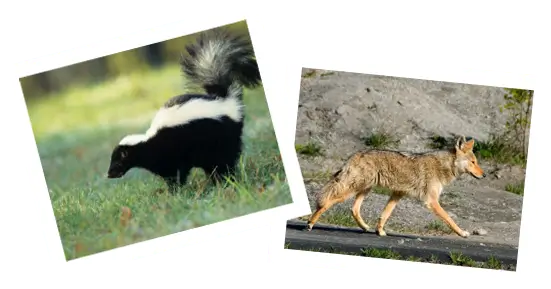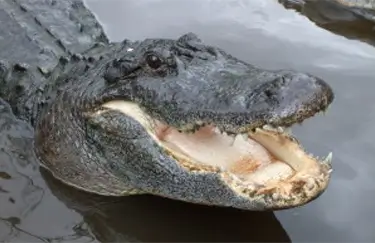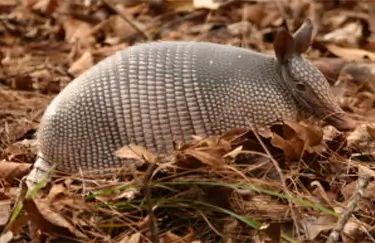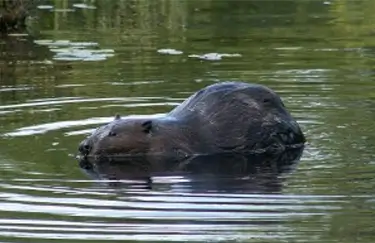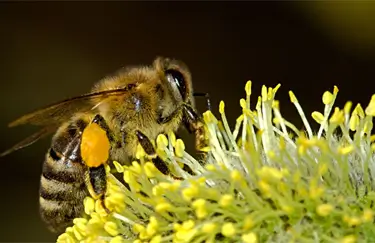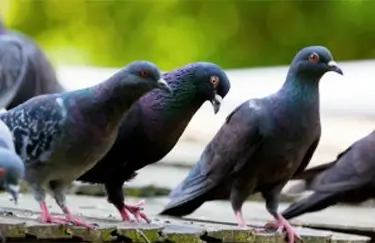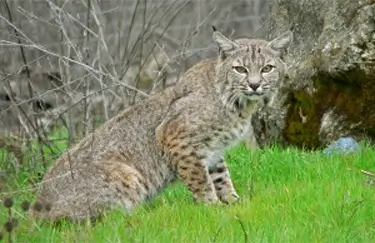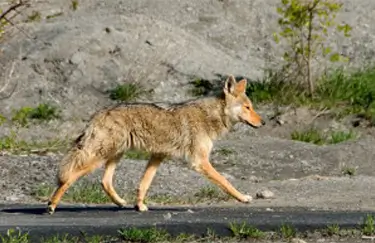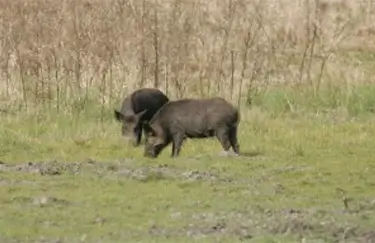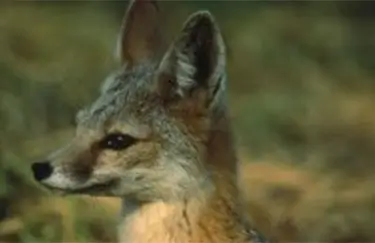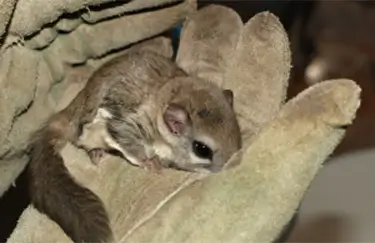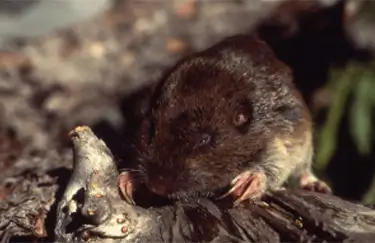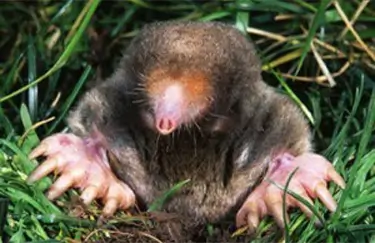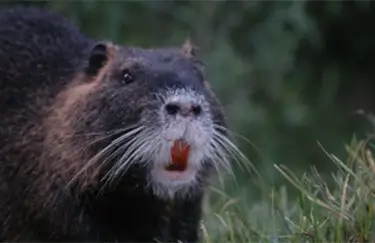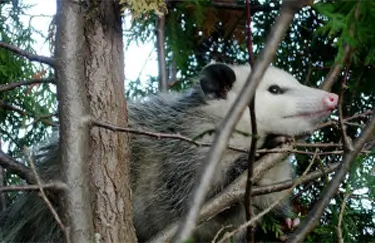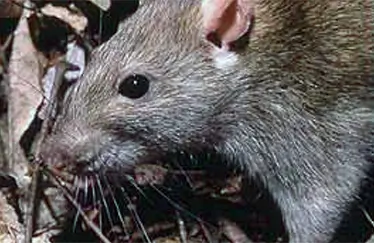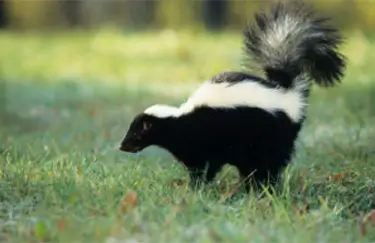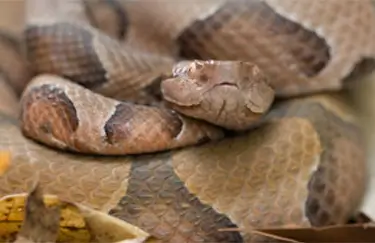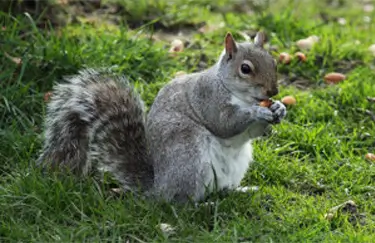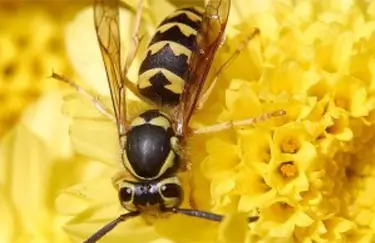Alligators
Alligator removal should always be left to the experts at Wildernex Wildlife Control. American alligators were once very common in water bodies across East and South Texas. Unregulated hunting and habitat destruction heavily depleted the population in Texas in the 1950’s. The protection of alligators, habitat management, and new water impound projects have aided in rapid population expansion across Texas in recent years. These factors combined with rapid urban sprawl continues to contribute to increased nuisance alligator conflicts. Many Texas residents live in close proximity to these native alligators with no conflicts; however, there are often alligators that can become a nuisance and must be handled by a licensed Nuisance Alligator Control Permit holder such as Wildernex LLC. Many alligators have the ability to be relocated while some alligators may lose their fear of humans and exhibit aggressive behavior and may be required by Texas Parks and Wildlife to be euthanized. Any alligators that have been fed by humans will be deemed inadequate to relocate andAmericanAlligator will be required to be euthanized. It is illegal to ever feed or attempt to feed a wild alligator. There are extensive state and federal laws protecting alligators in [...]
Armadillos
Armadillos are a small mammal with a leathery armored shell for protection. The nine-banded armadillo ranges across the southern United States, Central America, and much of South America. They continue to spread further north across the U.S. Armadillos cause major damage to structures and lawns every year. If you are losing the battle over your lawn to armadillos, Wildernex can provide the armadillo removal and long term armadillo control solutions you need. Armadillos overturn flowerbeds and lawns in search of grubs and worms in the soil. The damage they leave behind can be very costly to repair and replace damaged landscaping. Armadillo digging can also lead to erosion from Armadillo2water runoff. More importantly, armadillos commonly dig extensive burrows under concrete drives, sidewalks, and home foundations. Research has shown that these burrows can often extend 18 feet into the ground which can cause major shifting in foundations which can lead to tens of thousands in foundation repair. Abandoned armadillo burrows are also commonly inhabited by skunks, cotton rats, and rattlesnakes which have all been found utilizing these underground burrows. Armadillo removal and long term armadillo control services can put an end to your battle with armadillos and [...]
Bats
Bat removal in urban settings should always be left to the professionals at Wildernex Wildlife Control. Bats are considered to be one of nature’s most beneficial creatures; however, they can become a serious threat in or near human spaces. Bats are carriers of numerous diseases that can cause respiratory ailments, viral infections, and fungal infections. With every bat colony, you will find the presence of bat droppings, commonly known as guano, which act as a food source for cockroaches and various other insects. Guano accumulation will lead to an unpleasant odor and can cause serious health problems. As bat populations continue to increase within a roosting site, the potential for bat and human encounters also increases. This is a serious threat as bats are common carriers of the rabies virus, which is fatal if contracted. Direct encounters can result in the necessity to receive immediate preventative treatments which typically cost thousands of dollars. According to Texas Health Commission, rabies in Texas is an ongoing state health emergency. Therefore, according to the Rabies Control and Eradication Administrative Code (Chapter 169. Administrative Code) Rules of the Board of Health for the Rabies Control Act (Chapter 826. Texas [...]
Beavers
Wildernex Wildlife Control offers beaver control and beaver trapping solutions to fit your property needs. Beavers are the largest rodent in North America and while their behaviors can be very interesting and beneficial in some ecosystems, they can create significant damage to your property. Beavers use their sharp incisors to take down trees and are capable of taking down large adult trees in a matter of minutes. Beavers use their fallen trees to feed on the new growth that is out of their reach from the ground. Because of this, they often take down a large number of trees that can completely change the appearance of a property. Beavers will also use some of their fallen trees to build their lodges and dams to affect water levels as they see fit. Dams can be built or repaired by beavers in as short as a day. These dams can cause flooding in parks and residential areas. If you observe damage caused by beavers on your property, it is important to have a licensed professional provide beaver removal and long term beaver control services you need to protect your property. Wildernex is experienced in providing fast and [...]
Birds
Bird Control Wildernex Wildlife Control offers all aspects of bird control. Bird control problems are all unique and typically require careful evaluation and planning to determine which solutions are best suited to solve your specific problems on your property. Problems are common in or around residential and commercial properties. Common nuisance birds include pigeons, sparrows, starlings, grackles, blackbirds, and seagulls just to name a few. Property damage from birds can come in many different forms. Birds can directly damage property by pecking or pulling at building materials when collecting resources to add to their nests. That’s why bird control is so important. They also create fire hazards on properties by constructing nests around lights or other electrical equipment. Feces can deface property as its corrosive qualities can create irreversible damage to your property including vehicles, buildings, and signs. Bird fecal matter can also create serious health hazards. We have even seen floors and ceilings that have collapsed under the added weight from massive accumulations of bird feces. Birds are extremely filthy animals and their droppings can render walking surfaces slippery and dangerous. Furthermore, birds can create serious health problems for humans and pets. Birds commonly [...]
Bobcats
Bobcats are medium size cats of North America that are generally solitary and illusive but commonly become very bold when they are hunting and easily become top predators and often a nuisance. Bobcats commonly feed on wildlife ranging in size from wood rats to fully grown deer. However, when bobcats are living in close range to urban areas, they may be deprived of their natural wildlife food sources, which in turn leads to predation of livestock and pets. These opportunistic predators commonly feed on poultry, sheep, goats, house cats, dogs, exotic birds and game animals, and occasionally even calves. Bobcats are commonly found in urban settings as long as they have access to any of these suitablebobcats in urban areas food sources. In March of 2010 a bobcat was seen and later (due to bobcat trapping) captured in a parking garage of downtown Houston. Bobcats are continually sighted throughout the suburbs of the Houston area. If you are experiencing any of these bobcat issues or see a bobcat near an urban area, Wildernex can provide the bobcat removal and bobcat control services that you need. Our professional wildlife biologists are experienced and licensed to implement [...]
Coyotes
Wildernex Wildlife Control offers coyote trapping, removal, and prevention techniques that will keep them under control and protect your property. Coyotes range across almost all of Central and North America. Coyotes are opportunistic and versatile carnivores that feed primarily on other mammals. They commonly eat small mammals such as voles, prairie dogs, rabbits, squirrels, and mice but will also target larger animals like deer, javelin, and livestock. Coyotes are also known to eat birds, snakes, and lizards when given the opportunity. Although they will scavenge for carrion, they typically prefer fresh meat. Packs of coyotes are even capable of taking down and killing adult elk which can weigh over 550 pounds. The coyotes’ adaptability to living environments and food sources is what makes this animal so successful and even allows them to thrive in suburban and some urban settings. Because of this, coyotes are commonly seen eating human trash and domestic pets. Urban coyotes have been known to actively hunt cats and leap fences to take small dogs. Some bold urban packs have been reported to stalk joggers, bicyclists, large dogs, and even attack small dogs that are still on a leash. Coyotes are presently the [...]
Feral Hogs
Feral hog control is a growing problem in urban and rural settings and Wildernex Wildlife Control offers hog trapping and hog control programs that can be tailor-fit to your property needs. Feral hogs are an ever-growing nuisance across North America and much of the world. Feral hogs are opportunistic omnivorous feeders that eat almost anything they come across including grass, nuts, berries, carrion, nests of ground-nesting birds, roots, tubers, refuse, insects, and small reptiles. Feral hogs vigorously root up the soil in search of these food items and are capable of destroying acres and acres of land in a single night destroying grasses, shrubs, trees, landscaping, agricultural fields, and damaging water retention and drainage areas such as levees, dams, and canals. Government statistics in 2008 indicated that feral pigs cause an estimated $800 million of property damage per year in the U.S. alone and that number continues to rise. Most states in the U.S. have declared feral hogs to be a nuisance invasive species and spend large amounts of money in efforts to control them. Feral hogs not only damage property but also kill, consume, and out-compete many native plant and animal species. Texas is [...]
Foxes
Fox Control Wildernex Wildlife Control offers fox control to trap and relocate nuisance foxes. Foxes are small to medium size canines with narrow snouts and long bushy tails. Various species of foxes can be found around the globe and are very common across North America. These wild dogs are omnivorous feeding on small mammals such as rodents, birds, insects such as grasshoppers and beetles, reptiles including snakes, amphibians, eggs, and commonly feed on a variety of fruits and berries. Foxes are one of the few canine species which are actually known to climb trees to remove fruit. They commonly live in family groups and will often hunt for prey alone unlike many other canine species. Foxes harbor and transmit numerous diseases including rabies, fox tapeworm, sarcoptic mange, and many others. These diseases can be transferred to humans or domestic pets by many different means including direct contact with the animal, contact with feces or particles that can become airborne from feces and urine, or contact with ectoparasites that foxes spread near your home or business including fleas, ticks, and mites that cause sarcoptic mange. Fox trapping and fox control measures should be left to licensed professionals to minimize risk [...]
Flying Squirrels
Flying squirrel control can sometimes be a necessity as these unusual rodents can an urban nuisance too that can find their way into our homes and attics. Wildernex Wildlife Control offers flying squirrel trapping, removal, and long term control via full exclusion repairs to prevent future entry. Flying squirrels are nocturnal mammals that actually glide rather than fly. Flying squirrels can glide from tree to tree by leaping and stretching out their patagium which is a flap of excess skin that stretches from forelegs to hind legs. This provides a large flat surface that allows them to glide through the air. Flying squirrels are arboreal and typically live most of their life off the ground in trees and often in attics. Flying Squirrel Control Once flying squirrels inhabit your attic space, they use this area for shelter, breeding, and nesting. Damage to your attic can occur from consistent gnawing on electrical wires which creates serious fire hazards in your home or office. Burrowing in insulation and trampling insulation is common for flying squirrels which in turn can cost you in insulation value and high utility bills. Flying squirrels also flying squirrel 1establish latrenes in your [...]
Gophers
Wildernex Wildlife Control offers gopher control to remove the unwanted gophers from your property and an ongoing gopher control program that will control future populations from returning. Gophers, specifically pocket gophers, are burrowing rodents that spend most of their life underground. They are widespread across much of North America and extend well into Central America. Gophers have small eyes and short hair that typically matches the color of the soil in which they live. They typically range in size from 5 to 12 inches in length. Gophers are natural hoarders and will pack their cheek pockets full of food which is how they get their name pocket gopher. They carry this food back to stash it in their underground burrows. Gopher Control The presence of gophers is easily recognized through the presence of large dirt mounds that will appear on lawns, flowerbeds, and pastures. These burrowing rodents can cause severe damage to landscaping which can be costly for homeowners and business gopher moundsowners. They are also known to feed on plants that can damage decorative landscaping, agricultural crops, and even trees that can be damaged by gopher activity. Gophers will typically flee when threatened but [...]
Moles
Wildernex Wildlife Control offers mole trapping and ongoing mole control programs to keep your property maintained and free of moles. Moles are small subterranean mammals that typically spend their entire life underground. They have tiny or invisible eyes and ears as they are relatively unnecessary for their underground lifestyle. Moles have large oversized forehands that are specifically designed for digging. Moles can be found across North America and are a common pest problem. Moles primarily consume earth worms and grubs in the soil along with any other underground invertebrates and occasionally various types of nuts. Moles contain a toxin in their saliva which helps paralyze their prey once they capture it. This diet makes manicured lawns and landscapes a large target for mole activity. Well watered lawns and loose moist soils of flowerbeds are a hotspot for worm and grub activity. This abundance of food sources will continually attract moles to your property. Moles create elaborate underground tunnel systems which are not only highways for moles but also serve as feeding tunnels to collect worms and grubs. These underground tunnels are an eyesore throughout your lawn and flowerbeds and commonly travel under concrete driveways, sidewalks, and foundations which [...]
Nutria
Let Wildernex Wildlife Control handle your nutria trapping needs. The nutria or nutra-rat is a large semi-aquatic herbivorous rodent originally native to regions of South America but was introduced to North America by fur ranchers and have since become an invasive nuisance. Nutria have destructive feeding and burrowing habits that consistently destroy native plants. They also burrow through dams and levy systems which can weaken these structures and even cause them to fail. Nutria are also known to destroy human-made structures with their gnawing such as lakefront piers, homes, and even gnawing through tires. Nutria look similar to beaver but are slightly smaller and have a rat-like tail rather than the flattened Nutria2paddle-like tail of beavers. Nutria are a major nuisance in the US as they destroy wetland habitat and out-compete our native wildlife species that rely on these native marshlands and aquatic vegetation that is consistently destroyed by nutria. If you have nutria problems, it is imperative that they are removed. Please contact Wildernex to have a licensed wildlife biologist handle your nutria trapping and nutria control for your property. Have questions about wildlife control? Check out our FAQ page or contact us for [...]
Opossums
Wildernex Wildlife Control offers a wide range of opossum control services including trapping, exclusion repairs, attic cleanup, and restoration. Opossum, most commonly referred to as possum, are the largest order of marsupials in the western hemisphere. Opossum have more teeth than any other mammal and have long sharp canines. Females have a pouch used to carry their young after birth. Opossum are semi-arboreal, living much of their life in trees and shrubs high above the ground which leads to the likeliness of them entering your attic. They climb very well using an opposable digit on their back feet and a prehensile tail that allows them to cling to and hang from limbs and other objects with their tail. Opossum are opportunistic omnivores that will consume almost any food item that they encounter. They are known to feed on carrion as well as feeding on insects, frogs, birds, snakes, small mammals, slugs, earthworms, and grubs. They also commonly feed on fruits and vegetables, pet food, and even human garbage. Opossum frequently live in close association with humans which will often create human/wildlife conflicts. Encounters with opossum can result in disease transfer or injuries to humans or domestic pets. [...]
Raccoons
Raccoon removal should always be handled by the wildlife biology experts at Wildernex Wildlife Control. Raccoons are highly adaptable and can survive in many different types of environments including those in close proximity to humans. Raccoons not only survive in these urban areas but often thrive due to relatively easy access to living spaces and food that is made available in and around our homes and businesses. Raccoons are very omnivorous and commonly eat an even mix of invertebrates, vertebrates, and plants. This consists of worms, grubs, insects, fruits, nuts, amphibians, small mammals, birds, and bird eggs. In urban areas, their diet will also commonly consist of available cat food or dog food and any accessible garbage. Raccoons are mostly nocturnal and feed at night but will sometimes move during the daytime to take advantage of available food sources. Raccoons often carry many different diseases, bacteria, and parasites that can easily be transferred to humans or pets. Raccoons commonly carry multiple bacterial diseases including leptospirosis, listeriosis, tetanus, and tularemia. Raccoon Control Raccoons often carry many different diseases, bacteria, and parasites that can easily be transferred to humans or pets. Raccoons commonly carry multiple bacterial diseases including [...]
Rodents
Rodent control is best left to the experts at Wildernex Wildlife Control. Rats and mice are part of the rodent family and account for the most common and feared pest problem around the world. They are primarily nocturnal and while they have poor eyesight, they make up for it with exceptional hearing and rely almost entirely on their sense of smell to find food sources, shelter, and avoid predators. These small rodents commonly enter our homes, offices, restaurants, and other areas that can cause damage to structures, crops, and health risks to humans or pets. Rats and mice are generalists and feed on a wide variety of food sources. This wide range of foods includes seeds, fruit, stems, leaves, fungi, and various vertebrates and invertebrates. Rodent Control Rats and mice are not completely arboreal but will commonly spend much of their life off the ground in trees, shrubs, power lines, fences, rooftops, and attics. Rats reproduce quickly with most species having a gestation period of only a few weeks. With around a dozen young per liter and the ability to reproduce rapidly throughout the year, rodent populations can grow exponentially in a very short time [...]
Skunks
Skunk removal is ALWAYS best handled by the experts at Wildernex Wildlife Control. Skunks are small mammals with a thick coat of fur, most commonly known for their ability to spray their fowl odor from their anal glands when attacked or threatened. Contrary to many beliefs, skunks do not spray a mist but rather a direct spray with precise accuracy. They are able to hit targets more than ten feet away. The chemical compounds of their spray does not only smell bad and prove difficult to remove from skin, clothing, and pets, but can also cause temporary blindness. Skunks are omnivorous, feeding on both plants and animals. Their main diet consists of insects and larvae, earthworms, grubs, small rodents, lizards, frogs, snakes, birds, moles, and eggs. They will also feed on berries, roots, leaves, grasses, fungi, and nuts. If you see digging in your flowerbeds or lawn, one of the common culprits aside from armadillos are usually skunks that dig for grubs and worms in the rich moist soils of lawns and manicured landscapes. In urban settings, skunks may also take opportunities to feed on human garbage or accessible dog food or cat food. [...]
Snakes
Skunk removal is ALWAYS best handled by the experts at Wildernex Wildlife Control. Skunks are small mammals with a thick coat of fur, most commonly known for their ability to spray their fowl odor from their anal glands when attacked or threatened. Contrary to many beliefs, skunks do not spray a mist but rather a direct spray with precise accuracy. They are able to hit targets more than ten feet away. The chemical compounds of their spray does not only smell bad and prove difficult to remove from skin, clothing, and pets, but can also cause temporary blindness. Skunks are omnivorous, feeding on both plants and animals. Their main diet consists of insects and larvae, earthworms, grubs, small rodents, lizards, frogs, snakes, birds, moles, and eggs. They will also feed on berries, roots, leaves, grasses, fungi, and nuts. If you see digging in your flowerbeds or lawn, one of the common culprits aside from armadillos are usually skunks that dig for grubs and worms in the rich moist soils of lawns and manicured landscapes. In urban settings, skunks may also take opportunities to feed on human garbage or accessible dog food or cat food. Skunks are not true hibernators during the [...]
Squirrels
Squirrel Control Squirrel control is best handled by the experts at Wildernex Wildlife Control. Grey squirrels and fox squirrels are the most common squirrels in our area and the most common nuisance squirrels that we deal with regularly. These squirrels are small arboreal rodents, living most of their life above the ground in trees and high structures. They have good eyesight and sturdy well-developed claws for climbing. Grey squirrels and fox squirrels are entirely diurnal, meaning they move solely during the daytime. If squirrels have inhabited your attic, most noises will be heard during the early morning hours around dawn and late in the day at dusk. Squirrels breed twice per year, once in the winter and once in the spring. Most babies are born in mid-March or July depending on when peak breeding took place. Squirrel diets consist of a wide variety of plants, including nuts, seeds, conifer cones, fruits, fungi, and green vegetation. In some cases, squirrels have been known to eat insects, eggs, small birds, young snakes, and smaller rodents, especially if food is scarce. Squirrel control is best handled by the experts at Wildernex Wildlife Control. Grey squirrels and fox squirrels are the [...]
Wasps & Hornets
Wasp & Hornet Control Wildernex Wildlife Control offers wasp control, hornet control, and yellow jacket control services to fit your individual needs. Stinging insects such as wasps, hornets, and yellow jackets are beneficial to the ecosystem and valuable for pollination; however, when active in close proximity to humans, they commonly pose a major pest problem, especially when nesting near a home or business. Their presence can create a dangerous environment and a liability around the home or workplace. Many people are highly allergic to stings and can be hospitalized after just one sting due to anaphylactic shock that follows a sting. Unlike bees, many types of wasp and hornets are able to sting more than once which can turn a single attack into multiple stings. Many species of wasp and hornets also emit pheromones when they sting which triggers an attach message to the entire colony. Often one sting can trigger dozens if not hundreds or thousands more. Government statistics indicate 40-100 people are killed annually from insect stings and this number continues to rise each year. If you see wasp, hornets, or yellow jackets around your home, flowerbeds, office, or anywhere in close proximity to humans, contact [...]

